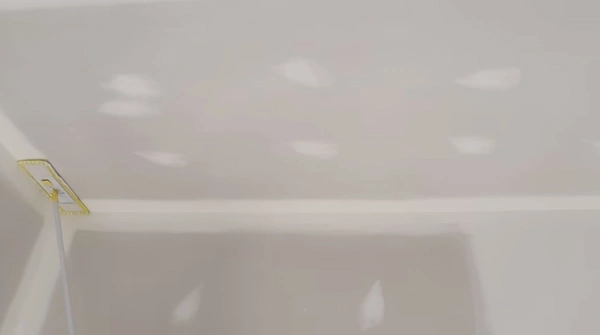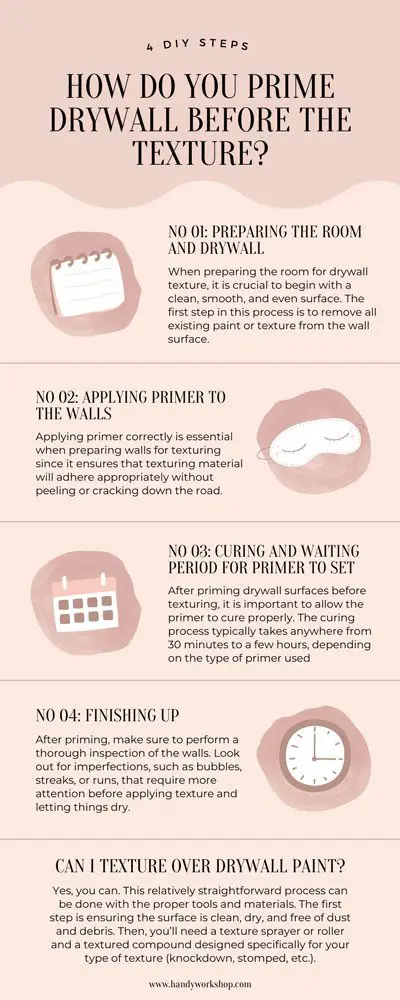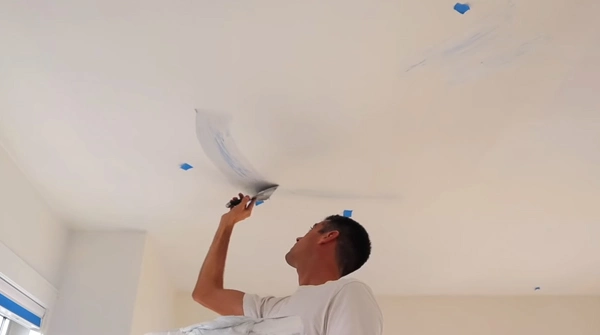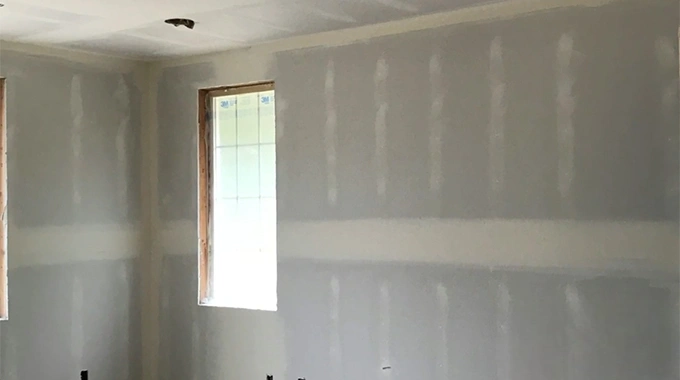Last Updated on July 30, 2023
Are you preparing to texture your drywall but aren’t sure whether or not you need to prime it? Adding primer is critical for truly transforming your space and ensuring long-lasting results. You can immediately ensure a fantastic finish by laying that essential layer before texturing.
Preparing the room and drywall properly is extremely important, as applying a primer, waiting for it to cure, and finishing up. Doing so will ensure that your texture job looks great and lasts for a long time. So if you’re wondering about priming your drywall before texture, the answer is an unequivocal yes.
Now you may think, how do I prime drywall before texture? Ok, let’s take it to step by step.
How Do You Prime Drywall before the Texture?

Primer acts as a bonding catalyst that ensures your textured walls will stick around longer than they would without it. When priming drywall before texturing, understanding the proper techniques is key to achieving the desired look and outcome. Here is the process:

No 01: Preparing the Room and Drywall
When preparing the room for drywall texture, it is crucial to begin with a clean, smooth, and even surface. The first step in this process is to remove all existing paint or texture from the wall surface. This can be done by scraping off any remaining material and sanding down any bumps or irregularities with a fine-grit sandpaper.
After removing the old paint or texture, it is essential to thoroughly clean off all dirt, dust, and debris from the wall using a vacuum cleaner and a damp cloth.
Once the walls are cleaned, it is necessary to inspect them for any damage, such as nail holes, cracks, or dents, that need to be repaired before applying primer. Repairing these issues will ensure that the primer adheres appropriately to the wall surface.
No 02: Applying Primer to the Walls
Applying primer correctly is essential when preparing walls for texturing since it ensures that texturing material will adhere appropriately without peeling or cracking down the road. As previously discussed, selecting an appropriate primer type based on your project and wall surface type is key here.
Whether you choose oil-based primers for extra protection against moisture. Latex-based primers for excellent adhesion or shellac-based primers for superior coverage require special care during application due to their volatile nature.
When beginning any project requiring priming, it is essential to evaluate the manufacturer’s instructions properly. Doing so will ensure your safety when using sprayers on big projects and guarantee a successful outcome with minimal effort.
Once this is done, you can proceed with preparing your tools, such as brushes, roller trays (or even spray guns if you decide on this option).
Before actually applying any kind of primer, make sure you have cleaned all tools carefully. It ensures they are free from dust particles before usage to avoid ruining your later result with unwanted ‘chunks’ within our newly applied coating.
Lastly, once all preparation has been completed, then apply a thin layer onto all areas where texturing materials will soon be added, ensuring full coverage but not leaving any pooled areas behind (as this could lead to much thicker layers than desired).
Here are some primer ideas for drywall texture:
Drywall Primer & Sealer

A high-performance primer and sealer for drywall surfaces are provided by this product. It penetrates deep into the wall to create an even, uniform base layer that aids in better paint adhesion and coverage.
This latex-based primer seals porous surfaces, helping to reduce the appearance of minor blemishes and flaws while providing excellent stain-blocking abilities. And it’s fast-drying and easily applied with a brush or roller, making it ideal for interior use on walls, ceilings, and other drywall surfaces.
Interior/Exterior Latex PVA Primer Sealer
This versatile primer is an excellent choice for both interior and exterior applications. It’s formulated with PVA (polyvinyl acetate) resin technology for superior adhesion on multiple substrates such as drywall, plaster, wood, concrete, masonry, and metal.
Plus, this low VOC primer creates a mildew-resistant coating that prevents stains from smoke and water damage while preventing tannin bleed from wood substrates. It also provides excellent sealing properties to help ensure top coat performance and improved color consistency over time.
Latex-Based Primer For Drywall
This specialized primer has been specifically designed for drywall surfaces to provide superior hiding power and excellent adhesion to new construction boards or previously painted surfaces.
It boasts quick-drying capabilities that allow you to apply multiple coats daily without waiting excessively long periods between coats. It is easy to apply with a brush or roller and will not fade or discolor your finished project when used with topcoat latex paint. Ideal for residential or commercial uses alike.
No 03: Curing and Waiting Period For Primer To Set
After priming drywall surfaces before texturing, it is important to allow the primer to cure properly. The curing process typically takes anywhere from 30 minutes to a few hours, depending on the type of primer used, environmental conditions, and preparation techniques.
As such, it is essential to understand how long to wait after applying the last layer of primer before moving on to the texturing step to ensure that all areas are completely dry and ready for texturing.
If the air is too humid (above 50%), it will take longer for the primer to cure as the moisture in the air prevents evaporation. Similarly, if temperatures are too low or high, they can also prevent proper drying of the primer.
It is thus important to keep these conditions in mind when allowing a primer coat to dry so that one does not risk potential damage due to wetness should it be left wet for too long.
Another essential safety precaution when working with paint and primers containing solvents is proper ventilation. Solvents can emit toxic fumes, which can be hazardous if inhaled over prolonged periods.
Thus, one must ensure adequate ventilation by opening windows or using a fan during the application of any primers or paints containing solvents to eliminate any potential health risks associated with their use.
No 04: Finishing Up
After priming, make sure to perform a thorough inspection of the walls. Look out for imperfections, such as bubbles, streaks, or runs, that require more attention before applying texture and letting things dry. Taking these extra steps will ensure your texturing job is done right the first time around.
Any spills or drips should be cleaned immediately using a damp cloth, as this will prevent them from hardening up overnight and becoming difficult to remove without damaging the wall surface afterward.
Once all necessary repairs have been made, let walls sit undisturbed until completely dry throughout (this could take anywhere between 30 minutes to 3 hours). If you apply texture on wet walls, some parts may not adhere properly, resulting in an unattractive patchy finish. Give your project plenty of curing time before finishing it for the best results.
Can I Texture Over Drywall Paint?

Yes, you can. This relatively straightforward process can be done with the proper tools and materials. The first step is ensuring the surface is clean, dry, and free of dust and debris. Then, you’ll need a texture sprayer or roller and a textured compound designed specifically for your type of texture (knockdown, stomped, etc.).
Once everything is in place, apply the compound to the wall using your chosen method and let it dry before painting. If you want a unique look, there are several types of texturing additives available that will add color or sparkle to your finished product.
Can I Decorate the Drywall with Paint and Primer in One?
Yes, you can use paint-and-primer-in-one products to decorate drywall surfaces. These products combine primer and paint in one coat for convenience, but they may not always be the best option for specific applications.
For example, if you are priming a new sheet of drywall or covering up an old stain, it’s best to apply two coats of high-quality primer designed specifically for these tasks before applying any sort of decorative coatings such as paint or wallpaper.
The added protection layer offered by a dedicated primer will help ensure that any decorative finishes last longer without fading or peeling over time.
Is One Coat of Drywall Primer Enough?

Quality primer provides a strong foundation for painting, shielding walls from moisture and mildew while securing adhesion between the layers. And one coat is usually enough if there are no problematic stains or signs of water damage.
For long-lasting, attractive finishes, two coats of paint may be necessary if your walls have existing imperfections like cracks or stains. Applying both layers provides an extra layer of preparation to protect the wall and ensure you’ll have a beautiful result for years.
Do You Need To Prime Drywall after Texturing?
Priming drywall after texturing is recommended before painting, as it will help ensure better adhesion and longer-lasting paint coverage on the wall surface.
Primers are specifically designed to fill in small pores and crevices in the texture, giving your paint a smoother finish and more even color when applied. For best results, use an oil-based primer with excellent binding properties with both the texture material and the topcoat of paint.
Why Shouldn’t You Skip Priming Before Texturing Drywall?
Despite some assuming that priming drywall before adding texture is unnecessary, this could not be further from the truth.
Priming correctly offers multiple benefits, such as increasing adhesion strength between different materials, improving durability and longevity of textures, preventing chipping or fading due to wear and tear, and creating a smooth surface ready for painting or staining if desired.
So don’t forget. Priming is an absolute must when creating beautiful drywalls with texture. When done correctly, priming will provide a longer-lasting finish while ensuring that the textured look of the wall remains vibrant and attractive.



